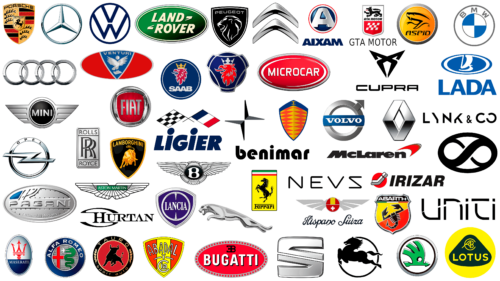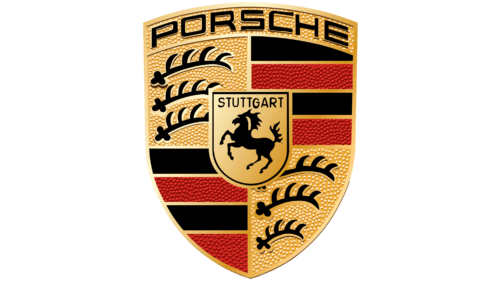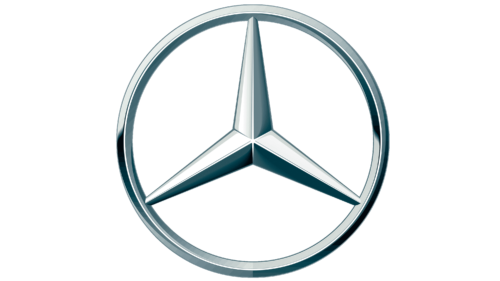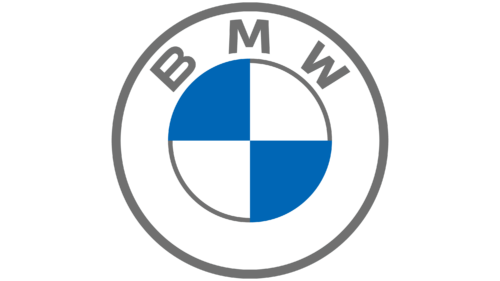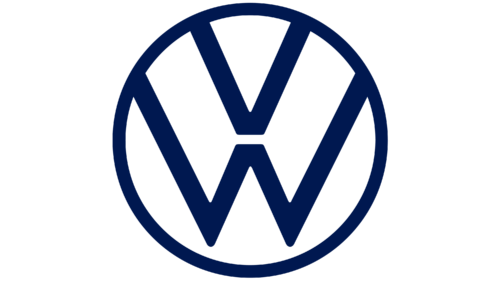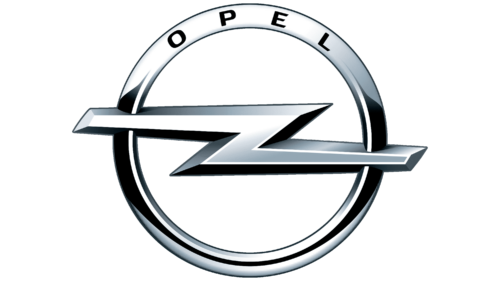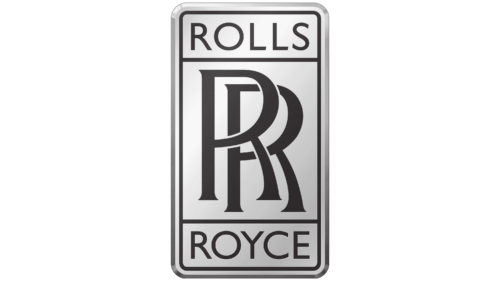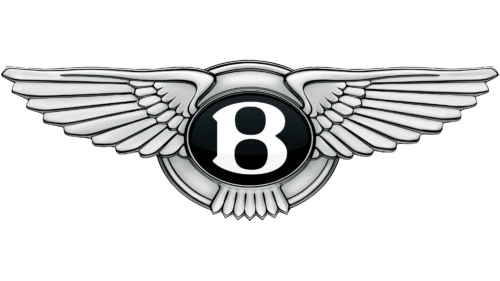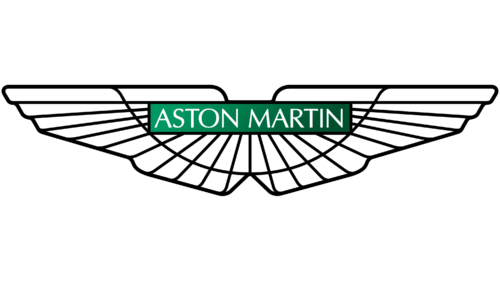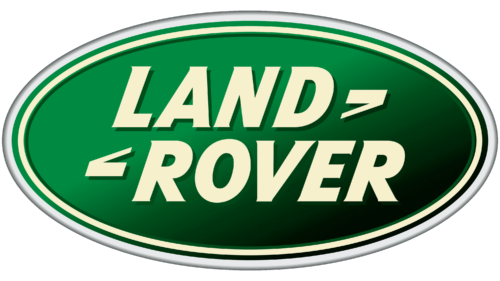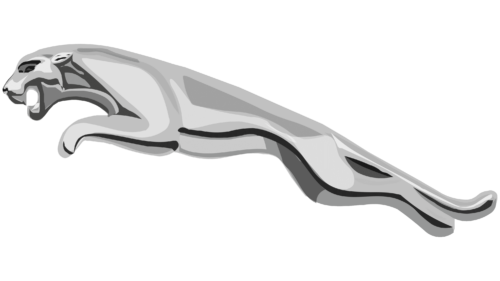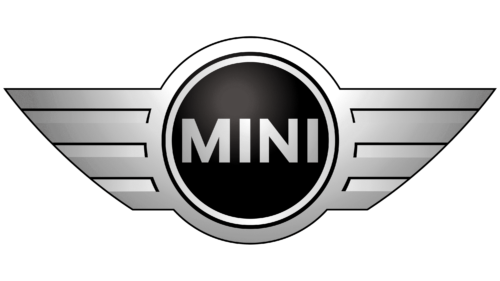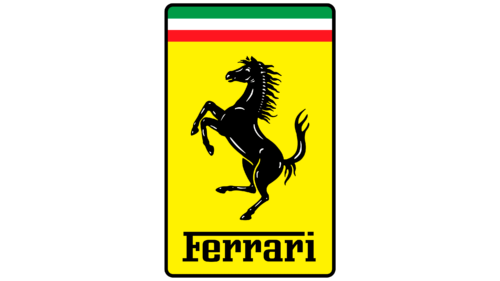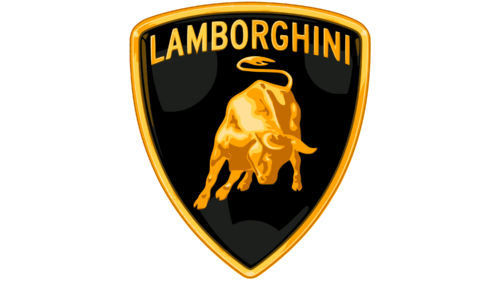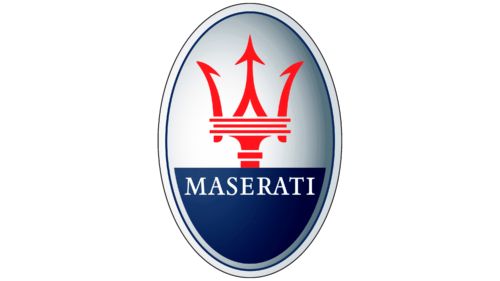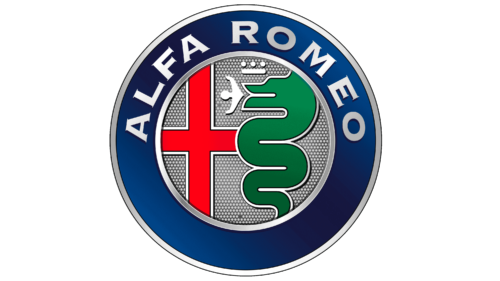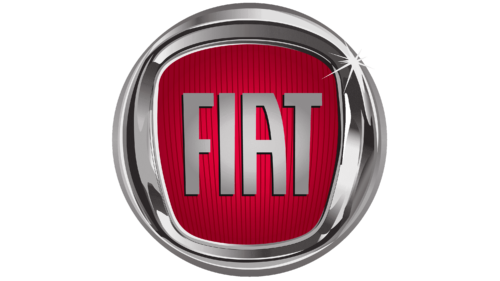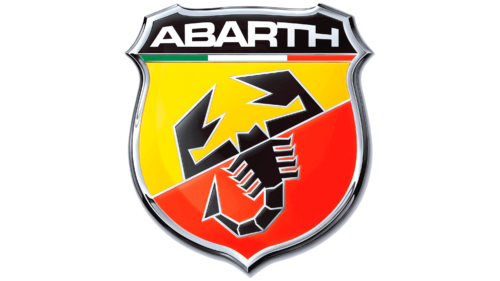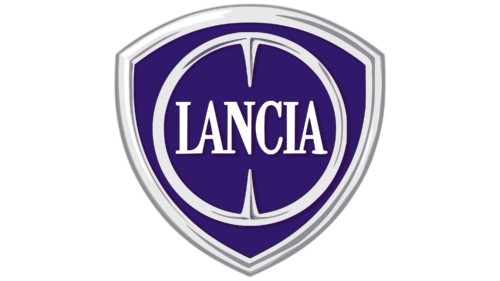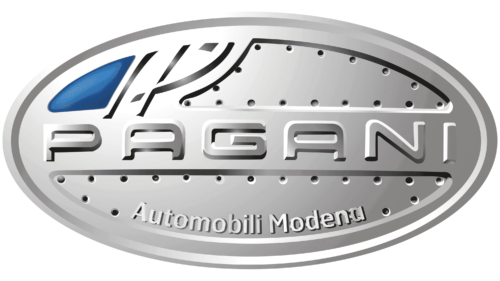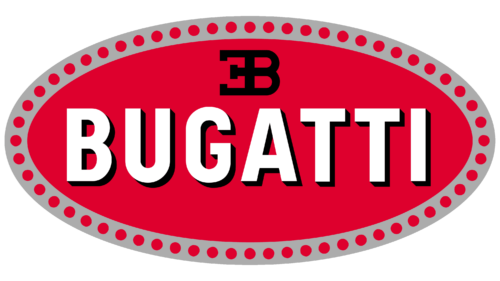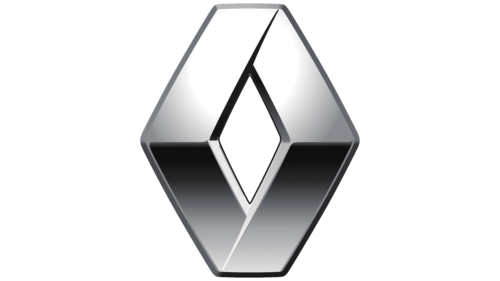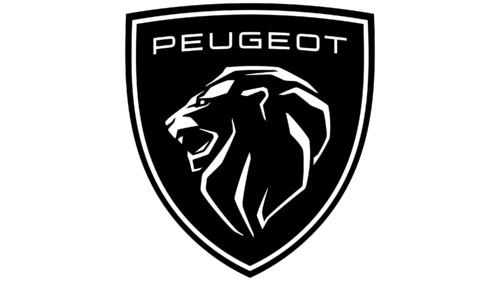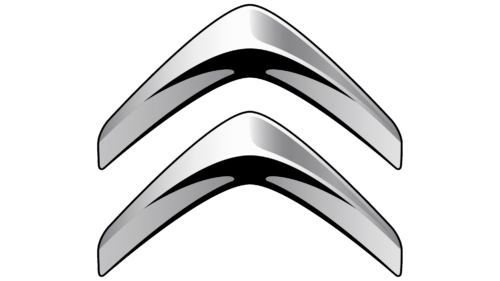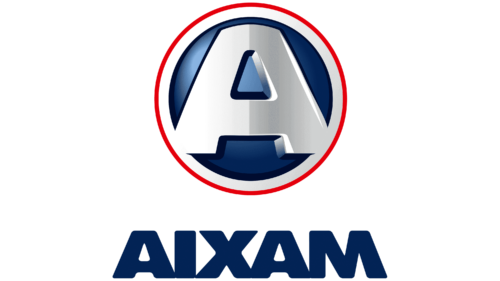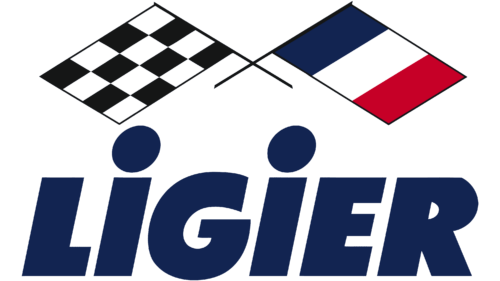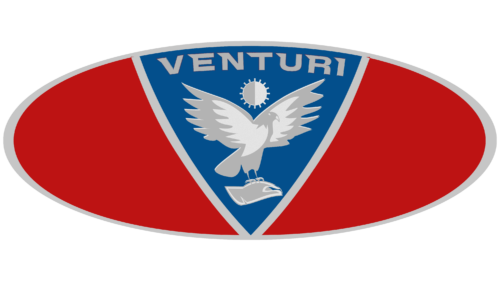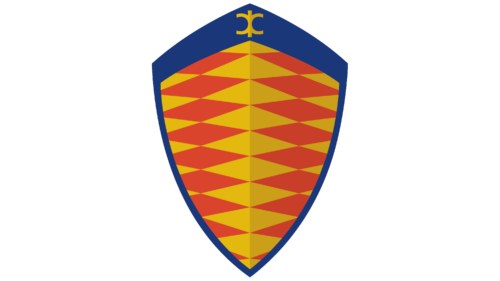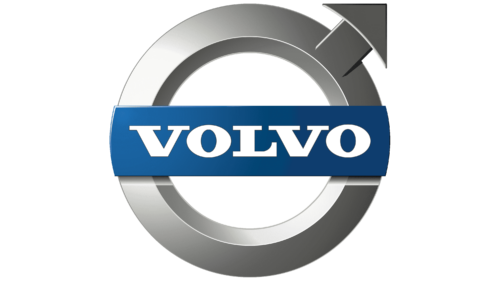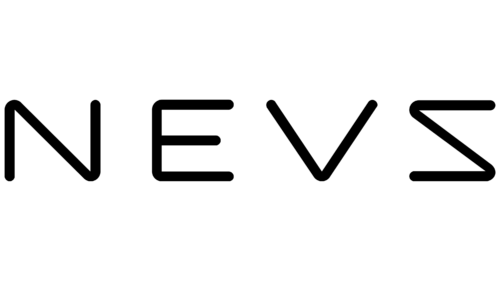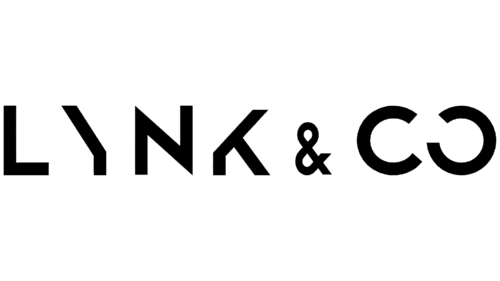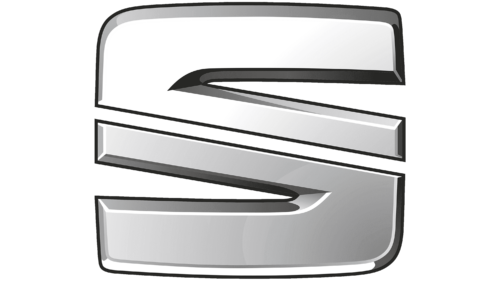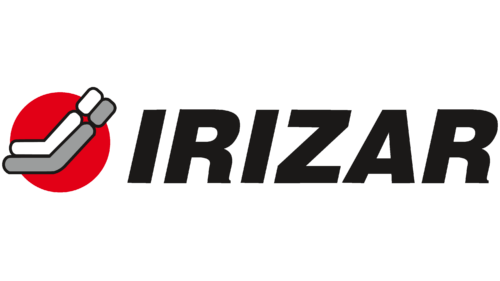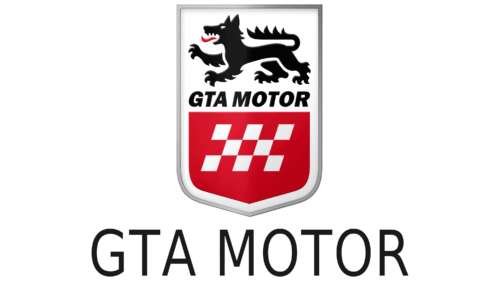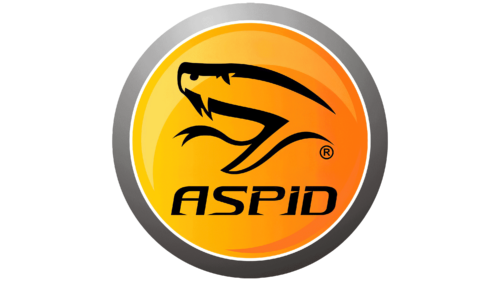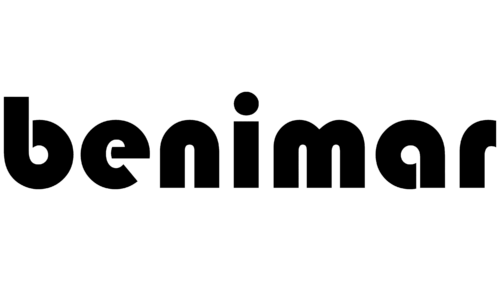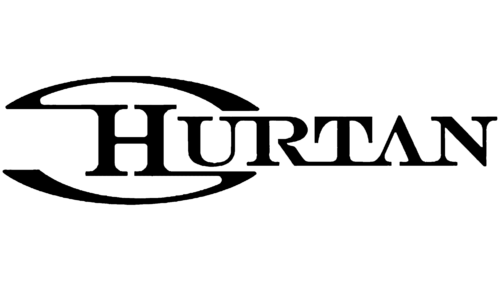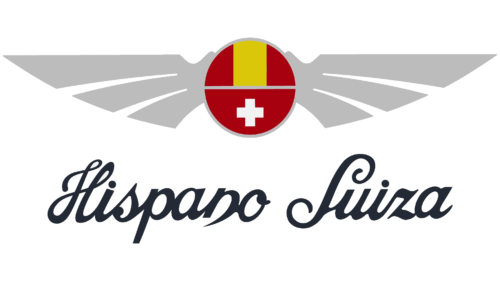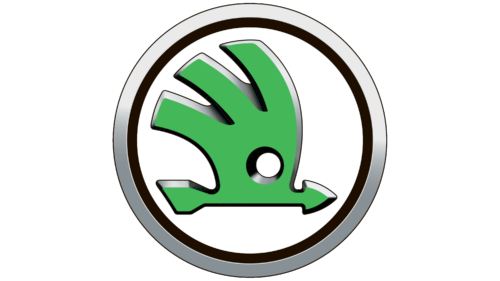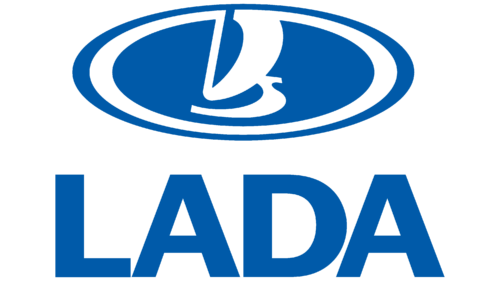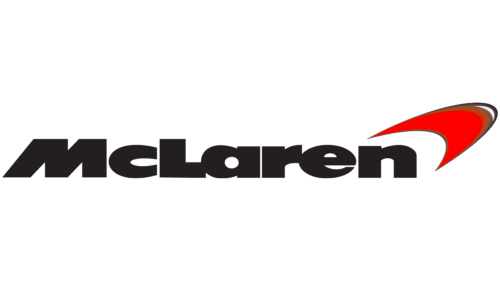Europe is the birthplace of the automobile industry. In 1886, the great German inventor Karl Friedrich Michael Benz invented the world’s first gasoline-powered car. Many companies then took up his idea and reoriented their business to producing cars with internal combustion engines. For example, Opel started with sewing machines, and ABT Sportsline started with forging metal parts for carts. Eventually, they switched to manufacturing automobiles and took the lead with other brands.
The rapid development of the automobile industry was hindered by the Second World War when all factories were forced to produce equipment for the armed forces. In the post-war period, they had to “gain momentum” from scratch so the European car market could recover fully only by the 1960s. Now, there are clear favorites, owning dozens of brands. These include BMW, Volkswagen Group, PSA, Peugeot Citroën, and Volvo.
Germany
Germany is the largest center of the European auto industry. German automobile companies are so developed that they have foreign subsidiaries and brands. For example, Volkswagen owns Lamborghini (Italy), Bentley (UK), and Bugatti (France), and BMW owns Rolls-Royce and Mini (UK). In addition, manufacturers concentrating on several large brands are active in Germany. They produce cars of various classes – from the luxury segment to the mass market.
Porsche (1931 – today)
Porsche is a leader in the luxury car and supercar market and one of the most successful automakers in the world. The company’s rich tradition dates back to 1900 when engineer Ferdinand Porsche introduced the electric drive for automobiles. At the same time, the company itself was founded much later – in 1931. The most striking feature of the company’s cars is the sporty design. It can be traced even in the premium crossover Cayenne and fastback Panamera.
Expensive and prestigious Porsche sports cars are in great demand worldwide. The annual sales volume grows yearly: as of 2008, it amounted to just over 86%. Releasing sports models, the manufacturer does not forget to participate in auto racing. Now, it has more than 28 thousand victories on its account.
Mercedes-Benz (1926 – today)
The legendary flagship model Mercedes-Benz 600, known as the “600th Mercedes”, challenged the representative cars of Rolls-Royce. This was made possible by the merger of Benz & Cie and Daimler-Motoren-Gesellschaft in 1926. For a hundred years, the company became famous for its collectible limousines and other no less prestigious cars. Its model range is considered one of the widest in the German car market. It includes brutal SUVs, compact minivans, stylish crossovers, luxurious convertibles, comfortable sedans, and other types of cars.
BMW (1916 – today)
BMW is a pioneer in the automobile industry. It invented the digital engine, introduced the ABS, and developed many other technologies. Its cars have become symbols of reliability and quality.
The first German roadster with a twelve-cylinder engine was created under the BMW brand. This company, also known as Bayerische Motoren Werke AG, has produced many cars that have left a significant mark in automobile manufacturing for a century and a half. Once it did not even have a license to produce cars, it received the corresponding permission only in 1928. Until then, its factories produced aircraft engines.
Audi (1909 – today)
Audi cars can not do without modern technology and exquisite design. The brand’s history began in 1909 with the appearance of the company Audi Automobil-Werke. The first car, the Audi-A, was released in 1910. After 21 years, the manufacturer merged with three automakers and formed Auto Union AG. In this union, it was responsible for the production of sports cars and participation in racing competitions.
In 1964, the Audi brand became part of Volkswagen’s concern. After the change of owners, the model range was replenished with cars with innovative technological solutions. Such developments include a variator with metal bands, an aluminum body, and a branded all-wheel drive.
Volkswagen (1937 – today)
Volkswagen is known for its divisions open in many countries around the world. It owns brands from Spain (SEAT), Czech Republic (Škoda Auto), Great Britain (Bentley), France (Bugatti), Italy (Lamborghini, Ducati), Germany (Porsche), Sweden (Scania). The main industrial sites are located in the city of Wolfsburg. The first Volkswagen cars were produced in 1935. The rapid development of the concern began in the second half of the XX century when it began to buy up other enterprises. At the same time, the manufacturer began to actively create new models, the most famous of which are the Scirocco, Passat, and Golf.
Opel (1862 – today)
The main production sites of Opel are located in Rüsselsheim. This automobile company was created by five brothers who decided to continue their father’s business – the owner of a factory producing bicycles and sewing machines. They used a common surname for the name. In 1900, the production of ICE carriages began under Darracq’s license. The brand then developed its models. From 1929 to the 1940s, Opel was owned by General Motors. The factories were ruined after the Second World War: all the equipment was taken to Russia. However, this did not prevent the company from regaining lost positions and becoming number 1 in the international market.
United Kingdom
The leading brands in the UK automotive industry are known for their prestigious luxury cars: Rolls-Royce, Bentley, and Jaguar. At the same time, they are matched by luxury sports car manufacturers such as Land Rover, McLaren, and Aston Martin. The mass market segment is also well-developed. Local companies offer quite a few inexpensive cars to consumers. In addition, factories produce a large number of commercial vehicles. As for the passenger car market, imports still exceed exports.
Rolls-Royce (1906 – today)
The Rolls-Royce brand belongs to the German concern BMW. The main specialization of the British company is the production of luxury cars, which it has been engaged in for over a hundred years. At the beginning of its existence, the company became famous for participating in rallies, where it became established. Then, it became a supplier of cars for the royal court of Great Britain. But the resounding success was followed by a fall: in 1971, the company went bankrupt. It was saved only thanks to government funding and BMW’s intervention.
Bentley (1919 – today)
Bentley Motors is one of the many brands of the Volkswagen Group. It is known for its luxury cars, thanks to which it has secured the image of the world’s most expensive and elite automaker. The company was founded in 1919 and, just three years later, began to win first place in prestigious races. In the 1930s, it became part of the Rolls-Royce concern. The manufacturer’s lineup includes executive sedans, full-size convertibles, crossovers, and SUVs. Shortly, Bentley plans to start producing luxury sports cars and electric cars.
Aston Martin (1913 – today)
Aston Martin’s prestige cars are presented in various market segments. Among them, sports and racing models prevail, including super-powered premium supercars. Currently, the brand is owned by a consortium of investors, and before that, it was part of Ford Motor Company. The name Aston Martin is a tribute to a racer named Martin, who overtook all rivals on the Aston Clinton circuit.
Land Rover (1948 – today)
Land Rover is known for producing the world’s most luxurious SUVs. At the same time, it looks for unusual technical solutions to create all-terrain vehicles. The body of its first car, released in 1948, consisted of a cheap alloy because, at that time, there was a shortage of steel in the UK. Reliability and stylish design distinguish modern models. Range Rover was even exhibited in the Louvre in Paris as an example of high art. Currently, the British brand belongs to the Indian conglomerate Tata.
Jaguar (1922 – today)
Jaguar’s success story began in 1925 with the production of motorcycle sidecars. Existing developments allowed it to start producing luxury cars in 1931. Until 1945, the company was called Swallow Sidecar (SS). It received its current name in the postwar period so that there were no associations with the German SS. Concern Ford, which temporarily bought the company, tried to make it a tuning agency. However, the company’s management refused this idea, and in 1996, Jaguar received a new racing car of its design. Currently, the brand is owned by Tata Motors.
MINI (1959 – today)
The modern company Mini, owned by the German concern BMW, continues the old traditions of the Mini brand, which existed until 2000. In the distant past, it had a different name – Cooper Car Company. Sales of the first cars (racing models) began in 1959. Their further modifications have forever entered the history of motorsport. Being a part of BMW, the automaker is not limited to compact cars. It also has classic crossovers and even limousines.
Lotus (1952 – today)
McLaren (1985 – today)
Vauxhall (1903 – today)
Italy
Italy is rightfully considered one of the leaders of Europe and the world car industry. Moreover, car sales occupy a leading place in the country’s economy: its contribution to GDP reaches 8.5%. The automobile industry in Italy was born in the late 19th century. In the 1910s, it was represented by dozens of companies, some still operating today. In the post-war period, local manufacturers staked on elitism. Now, they are expanding their assortment, adhering to three principles: luxury, speed, and high cost.
Ferrari (1947 – today)
Ferrari sports cars are engineering thought samples that have pleased luxury car fans since 1946. This company’s cars have firmly settled in the garages of celebrities. They were driven by sheiks and emperors, the creator of the race track Pierre Bardinon, American soccer player Lionel Messi, and German racing driver Michael Schumacher.
Since Fiat became the owner of the 1989 Ferrari, this brand’s sports cars have been produced serially and in a single copy. In the latter case, their price reaches several million dollars.
Lamborghini (1963 – today)
The most important decision in Lamborghini’s history was changing its model range. The company, which started as a manufacturer of ordinary tractors, gradually moved to high-speed supercars. Its first sports car debuted in 1963. The brand’s owner created it to compete with Ferrari and prove its superiority.
Maserati (1914 – today)
Maserati is an Italian sports car manufacturer that traces its origins to Officine Alfieri Maserati. This was the name of a small garage business of the Maserati brothers. In 1914, they founded a private company to produce racing cars and compete in competitions. And in the 1930s, prestigious cars for everyday travel appeared in the range. Once in the hands of Fiat, Maserati almost lost its individuality. The company’s management wanted to merge it with Ferrari but then changed its mind and left it as an independent brand.
Alfa Romeo (1910 – today)
The predecessor of Alfa Romeo was a company that produced cars under Darracq’s license. However, the company’s owners wanted to move away from simple copying and create something unique to implement new technologies. So in 1910, the first Alfa Romeo cars appeared, known under the brand A.L.F.A. Noticing the success and prospects of the company, the concerned Fiat bought it in 1986.
Fiat (1899 – today)
Fiat is one of the largest and oldest automobile corporations in Italy. It was founded by investors who united in 1899 to create a joint venture. At first, the plant produced various machinery – from wagons to tractors. But over time, the main goal of Fiat became the production of SUVs, city cars, and middle-class cars.
Abarth (1949 – today)
The Abarth brand, founded by Carlo Abarth in 1949 in Turin (Italy), stands out among Italian automakers. Its main products were Fiat-built sports cars and unique sports tuning. Today, the company is part of Fiat Group Automobiles. The brand stands out for its original and “leaky” visual style. Its logo is presented as a four-sided coat of arms of a complex shape, bearing the main symbol of the company – an abstractly made black heraldic scorpion in a thin white border, providing an effective visual contrast. The main field of the shield is divided diagonally and filled with yellow and red colors. The upper crest is filled with black color and is separated from the main field by a thin line in the colors of the Italian flag. The crest space is black. It is filled with the text of the company name in white sans-serif font.
Lancia (1906 – today)
The Italian company Lancia Automobiles S.p.A., founded by Vincenzo Lancia in Turin a year after its foundation in 1907, produced the first automobile. During World War I, the brand produced military and armored vehicles. In the 20s, it returned to civilian automobile manufacturing, producing the world’s first car with a “monocoque” body type in 1921. Having decided 2015 to stop promoting the brand, production since 2017 has only produced the Lancia Ypsilon model. Being conservative about its identity, the brand, over the years, has left its logo unchanged in the form of a triangular coat of arms in dark blue with curved sides. In its center is a silver circle, and the entire shield border, around which the brand name is placed, is in condensed white lowercase font. However, the center circle has two wedge-shaped elements at the top and bottom, which creates a visual perception of it as a steering wheel.
Pagani (1992 – today)
Italian automobile brand Pagani is known worldwide as a manufacturer of luxury sports cars and cars with carbon fiber bodies. Founded by Horacio Pagani in 1992 in Modena, it became known for its ultra-light and fast new-generation models. The brand expressed these traits and its corporate spirit with a progressive and somewhat aggressive logo. The sharpness and brutality of the emblem lines ensured its individuality and easy memorability. On the oval silver badge is located a convex volumetric brand name. Above it, in the upper left corner, in the shape of the car’s windshield, is a sector of attractive blue gradient color, softening the overall coldness of the metalized emblem. To the right of it, convex lines formed a large letter P. The upper and lower sectors around the inscription have dotted elements reminiscent of the rivet fastening of body elements.
France
French cars are known worldwide for their technological perfection, exquisite design, and high quality. Dozens of companies produce them, but the monopolists are two companies: Groupe PSA (former Peugeot Citroën) and Renault. They account for about 90% of the automobile industry and almost 100% of exports. The other manufacturers are mainly in the country’s domestic market, except Bugatti, which Volkswagen France owns.
Bugatti (1909 – today)
The Bugatti brand of luxury supercars has a long history dating back to 1909. As far as is known, the brand was created by engineer and artist Ettore Arco Isidoro Bugatti. The peak of popularity came in the 1920s when the world saw the new Type 35 GP. This model became the record holder for the number of race wins, taking first place more than 1,500 times. After the war, the business went into decline. The situation was saved by the EB110 superfast car, which appeared in the 1980s. At the end of the century, the German concern Volkswagen bought out the company.
Renault (1899 – today)
Nationalization did not pass without a trace for Renault. In 1945, the state took ownership of this company, and it received its current name and changed its direction of activity, producing the world’s first hatchback. Then, the company acquired a truck division (Renault Véhicules Industriels), but it was sold to the Swedish concern Aktiebolaget Volvo. Toward the end of the 20th century, financial difficulties began. To save Renault from bankruptcy, it was merged with Nissan.
Peugeot (1896 – today)
Peugeot is a bright representative of the mass market in the French car market. Moreover, the company’s model range is not limited to cars of the average price category. The lineup includes small commercial vehicles, crossovers, racing cars, etc. In 1941, an attempt was made to create an electric car to save gasoline, but the government banned it. The company then realized its ambitions by producing the Peugeot 106 and introducing three concept cars. In the 1970s, a landmark event occurred: the automaker merged with Citroën to become part of PSA Peugeot Citroën.
Citroen (1919 – today)
Citroën, which has represented Groupe PSA since 1976, was founded in 1919. It has never changed its traditions, so from the beginning, it produced inexpensive and high-quality cars for mass consumption: crossovers, sedans, hatchbacks, and other models. This manufacturer is also famous for its unusual approach to advertising, as for almost ten years it has used the main landmark of Paris – the Tour Eiffel Tower – as a billboard.
Aixam (1984 – today)
The French automobile brand Aixam is little known outside the country. But those familiar with the company’s products praise its offerings – miniature cars, classified in some countries as quad bikes. The company was founded in 1983 in Aix-les-Bains (Savoie). Its cars are distributed in almost all European countries, where the brand emblem – an enlarged bold letter A in a circle – is quite famous. The emblem’s color scheme contains the French flag’s colors – blue-white-red. The latter is a thin border of the circular element of the emblem. The white color in practical use is replaced by metallic silver, which makes the emblem attractive and memorable.
Ligier (1971 – today)
The French automaker Ligier is considered one of the gems of the domestic car industry, which is also unknown worldwide. The brand was founded in 1968 by a racing driver and rugby player, Guy Ligier, in Abrest, Allier, Auvergne, France. The brand became famous for its first sports model, the Ligier JS2. The prefix JS was a tribute to the founder’s best friend, Jo Schlesser. In 2008, the company was transformed into Ligier Group, known for its quality racing cars and microcars. The company’s logo is an image of two crossed flags – the country and the starting checkered racing flag. Under them is the brand name typed in large sans-serif font with a slight slope to the right, symbolizing speed and acceleration. The letters are in the brand’s signature dark blue color.
Venturi (1984 – today)
The Venturi brand is well known to Europeans due to the high quality and luxury of its products, which are based on Porsche and Ferrari. Founded by Claude Poiret and Gerard Godefroy in 1984 in Fontvieille (Monaco), today, it produces some of the most expensive and aesthetically pleasing electric cars, having gone bankrupt in 2000 after failing to produce luxury racing cars. The brand has produced a limited edition Venturi Fétish. Eye-catching, sparkling designs and high performance characterize the company’s cars. Like the design of the company’s products, its logo is characterized by brightness and sophistication. The main corporate color is bright red, which fills the entire space of the oval emblem with a silver border. The central element of the emblem is a figure in the form of a triangular blue shield with a light gray frame and a gray bird in the center with spread wings, reminiscent of the image of the heraldic bird phoenix with a head in the form of the sun. Above it, repeating the oval curve, is the brand name inscription in gray in a specially designed elegant font.
Microcar (1980 – today)
The Microcar brand was formed as a division of Beneteau in the early 1980s. But in 2000, it became part of Ligier as a division while retaining its full production profile. The Microcar has a bright and sleek design with an elongated oval. The red color, shape, and design are reminiscent of lollipops, effectively echoing the shape of our production’s small but bright cars. The oval is arranged horizontally. Its inner space is occupied by a gray-silver inscription of the name, made in a capital font of modern design without serifs, with sharp, rounded corners. Two silver orbits frame it.
Sweden
The automobile industry in Sweden began in 1927 when Volvo produced its first passenger car. This “delay” could be due to the lack of an extensive road junction due to the difficult terrain. It also explains why 80% of the cars produced are sold abroad and not in Sweden. Despite this situation, there are enough local manufacturers in the country that are no longer inferior to competitors on the international market. The most famous of them are Scania, Saab Automobile, and Volvo.
Koenigsegg (1994 – today)
The Swedish automobile industry is not limited to the mass market. The production of luxury cars is developed in this country, and one of the representatives of this segment is a private company, Koenigsegg, which produces luxury models. It specializes in powerful and fast supercars and plans to break the world speed record for production cars. The company is headquartered in the suburb of Ängelholm.
Volvo (1926 – today)
Volvo is a luxury car manufacturer from Sweden. The first model of this brand came off the assembly line in 1927. The revolutionary innovations followed one after another. Moreover, the company became famous for its cars and technological developments that increase driving safety. These became the basis for today’s international standards. Volvo has changed owners several times: after a short stay with Ford Motor Company, it became part of Geely Automobile Holdings Limited.
Saab
SAAB has a tragic history: after 75 years in the automobile market, it went bankrupt and was closed in 2012. Its commercial success began in 1959 with the production of the famous Saab 95 station wagon. The company then became a pioneer in the safety field, developing several technical innovations. In 2000, the company was completely absorbed by General Motors. Several unsuccessful decisions of the new owner led to financial problems for SAAB. In 2012, the brand was acquired by National Electric Vehicle Sweden and immediately discontinued.
Scania (1911 – today)
Scania buses and trucks are known worldwide, as this manufacturer pays attention to quality and modern technology. For a long time, the company cooperated with the Spanish company Irizar. Together, they created the Century 3000 bus model, with the body from Irizar and the chassis from Scania. The company also produces engines that run on biogas, rapeseed biodiesel, and ethanol.
NEVS (2012 – today)
Swedish car manufacturer NEVS is the successor of the world-famous Saab company, announcing itself right after the venerable brand closed. It retained some features of its predecessor but chose a different direction – developing and producing electric vehicles. The company reflected its progressiveness in its visual appearance. Its logo is a text name of the company, made by a specially designed lowercase futuristic font of capital letters. The minimalist style, rounded corners of the letters, and softness of the stripes’ endings made it particularly attractive and memorable. The distance between the letters played an important role in creating the necessary visual perception, which ensured the creation of a large amount of air, giving the composition lightness and freshness.
Polestar (2017 – today)
Polestar electric cars are now known all over the world. As a product partner of the world-famous Volvo Cars Flash brand in 1996. In 2015, the brand became part of Volvo, which today is part of the Chinese concern Geely. The company’s name comes from the STCC Polestar sports racing team, which founded Polestar Performance AB, acquired by Volvo Cars in 2015. Production of high-end electric cars began in 2017 with the introduction of a concise but sophisticated logo. The composition consists of two triangular flags. Their diagonal arrangement to the center of the image forms a quadrangular silver star in a gradient rendering. This shape creates a common symbolic image of the North Star. The futuristic nature of the execution brings something cosmic and extraterrestrial to the spirit of the image.
Lynk & Co (2016 – today)
The Swedish and Chinese car industry cooperation resulted in a joint venture in Gothenburg – Lynk & Co. in 2016. Its founders were Geely and Volvo Cars. During this time, the brand announced the creation and demonstrated concepts of three models – crossovers 01, sedans 03, and a model on the Volvo XC40 platform. The company’s emblem was designed as the logo of a fashionable modern brand. It is a text inscription – the name of the company in monochrome. The font is made in a modern geometric style without stripes on some letters. The letter “O” with a missing segment on the left side stands out. This graphic move creates the attractiveness of its combination with the neighboring letter “C,” providing visual individuality and easy memorization.
Uniti (2016 – today)
The Swedish automobile industry has been rejuvenated in a big way. It is characterized by the emergence of many young companies creating successful competition to the venerable world leaders. Among such companies is Uniti, a car brand that came out in 2016. Its mini-class digital electric city cars are characterized by a modern, highly aesthetic design and an original 2+1 seating scheme. The brand paid special attention to its visualization to break into the market immediately and attract attention. Depth of elaboration and style distinguish its emblem. Executed in a strict black color, the logo is the text name of the company, which uses a non-standard font sans-serif, made in the style of electronic fonts. Along the entire inscription, the letters are cut by a thin white stripe, drawing special attention to the inscription. This design makes the font appear from the distant future, which echoes the company’s main goal of introducing clients to its projects that represent the future today.
Spain
The Spanish automotive industry is less widely popular than the same industry in other European countries. This leads to the mistaken belief that such production in the country was founded by the Italians when 1919 the FIAT concern established its branch near Barcelona. However, the first Spanish car saw the light as early as 1904, with the appearance of the company Hispano-Suiza, whose luxury models successfully competed with the touted British Rolls-Royce in the same category for a long time. Even though the development of this type of industry in the country depended on the political situation and the domestic market could not effectively compete with foreign manufacturers, which led to the mass introduction of products of leading world brands, the history of the Spanish automobile industry deserves special attention. In addition to the previously existing, world-famous, but already closed companies, the country’s car industry is now represented by a dozen recognizable brands – domestic formations and divisions of leading world concerns.
SEAT
Founded with the assistance of the Italian concern Fiat by the Spanish National Industrial Institute in 1950 with a factory in Martorell, SEAT introduced its first car in 1953. The brand mainly focuses on racing models, which Spanish racers have used since 1972. In 1990, the company fully joined the Volkswagen concern. It constantly changed the brand’s logo, which today is represented by a symbol familiar to the world – the letter S, the first letter of the company’s name. It is available in steel gray or metallic color with notched cutouts at the top and bottom. The top and bottom are separated and resemble two blades pointing in different directions. Under the sign is the text of the company’s full name in red. Such execution of the logo symbolizes the constant development of the company and its striving for overall balance and stability, reflecting practicality against the background of red color as an emotional element of the composition.
Irizar
In 1889, Irizar appeared on the Spanish automobile market and later became a successful bus manufacturer. The first bus was produced in 1926. Today, the company is known for modern models with internal combustion engines, electric, hybrid, and integrated. Over the years, the brand has changed its logo while maintaining its commitment to its glorious history. Today, the emblem meets all the requirements of modern rules of its formation and is a sign consisting of a symbolic image of a wheel, inside which are stylized “ir,” made with a slight slope to the right and a slight symmetrical bend. They form the semblance of spokes and are made in gray color with shadows that give the image volume. The full name of the brand is also in this style.
Tauro Sport Auto
In 2010, in Valladolid, a company appeared focused on producing modern luxury sports cars. The enterprise resulted from a joint project of Spanish entrepreneurs and the British automaker. Tauro racing models are produced in small batches due to the constant need to make new cars for each model, and most of the operations are performed manually. The most famous line of the brand is the Tauro V8. Its round red, black, and yellow logo is impressive and easy to remember. The centerpiece of the logo is the black silhouette of a heavily horned bull in a bullfighting turn in a bullfight. His figure is highlighted with a light yellow outline, providing visual perception clarity. The bull is depicted on a rich red background in the center of a small circle. The brand name is inscribed on the black field of the outer circle in yellow letters, separated by a floral ornament of stylized tulips.
Spania GTA
The full name of the Spanish manufacturer of sports racing cars is Spania GTA, founded in 1994 in Valencia – SPANIA GTA TECNOMOTIVE S.L. The company’s founder was the Spanish racer Domingo Ochoa, the creator of the GTA Motor Competition team. The most famous model was the 2005 GTA Spano car, the concept car presented in 2010. It combines the best sports technology with elegance and exclusivity of design. The original emblem ensured the brand’s recognizability, which reflected the family crest of the company’s founder. The contours of the emblem repeat the shape of the coat of arms with rounded lower corners. Its upper part on a white field depicts the heraldic figure of a black wolf, ready to jump, representing courage and strength, loyalty to the family and its values, and the ability to defend their interests. The accent element of the figure is a red tongue sticking out of the mouth. The field under it is divided into white, with the inscription of the first word of the brand name made in black and red, where the inscription GTA is applied in white. Below it are white checkered racing start flags showing the brand’s area of operation.
Tramontana
Spanish atelier Tramontana was founded in 1995 by Josep Rubau in Barcelona (Catalonia). It owns the registered trademark of the same name – Tramontana. The company aimed to revive the classic Spanish car industry of the last century in the field of sports models while doing away with traditionalism. In 2005, the brand presented its most famous car – the Tramontana Car. The new family of supercars is assembled by hand in small series. The brand’s logo fully corresponds to its spirit, reflecting its main goals and objectives. The black oval has a figure resembling a mathematical symbol of infinity and simultaneously echoes the adopted stylized image of a race track. A departure from traditionalism in visualization, a symbolic demonstration of the desire for constant development, and the main focus of production are reflected in this emblem.
Aspid
The make and model of the Spanish sports car from the consulting group IFR – Aspid – was first introduced in 2008. It was intended for the manufacturer to showcase its capabilities and available technology. The name was chosen in honor of a small and fast snake, which became particularly famous after it was used to kill the Egyptian queen Cleopatra. Thus, the manufacturer decided to express its main task – despite its small fame- to beat the most famous leaders of the world’s automobile industry. This name became the basis for creating the original round emblem of the brand, the contours of which are gray, and the inner part – in sandy yellow, which refers the viewer to the sands of the habitat of eukaryotes. On this background, in black strokes, is a snake’s head with its mouth open and tongue out at the moment of attack. Underneath it, in black modern lowercase font with a slight slant to the right, is the brand name.
Benimar
Appearing in 1974, the Spanish automaker Benimar showed its debut project four years later. The company’s name consisted of two words – the first letters of the name of the town where the brand was founded – Benicarló, Castellone, and an indication of its coastal location – Mar. In 1984, the company changed its name to Ocarsa. In 2002, it became part of the Trigano company, becoming a subsidiary. Its motorhome immediately became the leader in this segment in 1978. This type of vehicle, like the company’s caravans, is particularly sought after today. The brand’s emblem is in the form of a text mark – the name. A round sans-serif font was chosen, such as Blippo Std Black by Linotype, the structure of which makes it easy to remember the name. The roundness of the letters echoes the smoothness and roundness of the shapes created by the car brand.
Hurtan
Hurtan car brand was born thanks to the desire of its founder, Juan Hurtado Gonzalez, to realize his dream – to create a modern sports car in retro style. The first car was born in the early 80s of the last century and was very successful. During this wave, the founder created the company Hurtan Desarrollos SL. Its first model, the Albaycín T2, appeared in 1992. Today, the brand is located in Granada, producing electric cars, among other things. The brand’s emblem consists of a combination of a letter symbol and the brand name. The sign is simultaneously the first letter of the name – H. The upper part of the left leg of the letter and the lower part of the right leg are half arcs, which form the visual unity of the composition. Emphasis on unity is also made with the help of links between each letter of the name.
Cupra
Cupra is a trademark of the Catalan company SEAT Sport of Abrera, created in 1985 as an additional sports division of the brand, now part of the Volkswagen Group. The company produces cars for rally and sports racing. In 2018, the brand was renamed Cupra, gaining full independence and starting to produce hybrid cars. The name became a combination of two words – Cup and Racing. Its logo was the company’s name in Swell Type’s Hyperspace Race Extended Heavy font, stretched horizontally. The emblem is represented by a unique sign of a complex shape, forming a new corporate style of the renewed brand in the spirit of Marvel or Transformers symbols.
Hispano-Suiza
Hispano-Suiza, a joint venture between Spanish entrepreneur Juan Castro and Swiss engineer Damian Matheu, was founded in 1904 in Barcelona (Spain). Until 1914, the brand stood out primarily for its luxury cars, which continued after the war. In 1944, the company became part of ENASA, refocusing on aerospace. An attempt to return to car production was made in 2010 and 2019. The brand established itself through its cars’ high-quality and stylish design, ensuring its logo was recognized worldwide. The emblem reflected the brand’s aviation focus. It was a stylized symbol of a rotating propeller with open gray bird’s wings departing from it and a round white element in the center. In the background was a red oval with a yellow stripe to the center, the color of the Spanish flag, with a white Swiss cross in a gray outline at the bottom.
Pegaso
Founded in 1946 in Barcelona, the Spanish automobile brand Pegaso, the sports division of Enasa, ceased to exist in 1994, merging with Iveco. In addition to the sports division, it produced tractors and armored cars, trucks, and omnibuses. At the old Hispano-Suiza plant. The automaker’s logo was characterized by original design and memorability. The silhouette of a black horse in a jump, with a developing mane and tail, stretched horizontally, breaking the black circle and closing it, was known worldwide. The emblem reflected one of the brand’s main goals – the desire to enter the international market and produce machinery, the strength, power, and nobility symbolized by the silhouette of a proud and freedom-loving animal.
Abadal
In 1912, in Barcelona (Spain), a new brand of cars appeared – Abadal, founded by Francisco Abadal – a famous Spanish racer. The brand bought cars “Imperia” in Belgium and sold them under its brand. Having bought a local branch of Buick in 1916, the brand began to produce its models, equipping them with power units of this manufacturer. After the First World War, the brand resumed production. One of the most famous models was the Imperia-Abadal. The beginning of Imperia’s cooperation with General Motors led to the brand’s decline, which closed in 1930. Its emblem was a triangular heraldic shield with the sides bent outward. Its field was divided into three stripes and made according to the rules of application of colors on the Spanish national flag – in the red-yellow-cranes. In its upper part, repeating the arc bend, the company’s name was written in white rounded-convex font. In the central part, between two curved white dashes, there was a Y sign under the Cia symbol, with the last two letters inside the first letter and the underline inside the last letter. The shield had a contrasting yellow border with black lines.
Other European Countries
Germany, Italy, Great Britain, France, and Sweden are not the only European countries with a developed automobile industry. Of course, they lead the world market, but other countries also bet on the automotive industry. Moreover, many brands belong to well-known German concerns, so they have every chance to stay afloat. For example, Czech Škoda Auto and Spanish SEAT are part of the Volkswagen concern.
Škoda
Škoda is one of the oldest and largest car manufacturers in the Czech Republic. It was established in 1925, but its predecessor, Laurin & Klement, began operations as early as the mid-19th century. Škoda became a resounding success after the Volkswagen concern took an interest in it. Becoming part of the German concern, the Czech manufacturer released its most famous novelty, Octavia.
Lada
The automobile brand Lada was founded by the Central Committee of the Communist Party of the Soviet Union and has been owned by AvtoVAZ since the Soviet Union. The main plant is in Togliatti and was built jointly with the FIAT concern. The automaker has a wide model range of all-terrain and front-wheel-drive cars, including the Priopa, Kalina, and Samara families.
McLaren
McLaren is the flagship brand of McLaren Automotive Limited. Designers developed a logo, combining black lettering with a wide red arc, similar to an inverted swoosh.
Lotus
The Lotus sports car company was founded in 1952. It uses a logo in the form of a yellow circle with a monogram of the letters “A,” “B,” and two “C.” All elements are inside a dark triangle with rounded corners above the bright yellow word “LOTUS.”
10 Most Popular European Car Brands in the U.S.
Despite the developed automobile industry inside the country, many European brands are in demand in the United States. Moreover, Americans buy imported cars in various segments – from mass market to premium. The best-selling car remains the German Mercedes-Benz, which attracts the attention of luxury connoisseurs. In second place is BMW, a luxury brand from Germany. It managed to overtake Volkswagen, which is focused on the consumer class.
Here’s a concise overview tailored for readability and comprehension:
- Volkswagen – Known for models like the Beetle and Golf, Volkswagen is a giant in the automotive industry, offering a range of vehicles that Americans love for their reliability and engineering.
- BMW – This German brand is synonymous with luxury, performance, and innovation. Popular models include the 3 Series and X5, which have cemented BMW’s status in the U.S.
- Mercedes-Benz – Another German powerhouse, Mercedes-Benz is revered for its luxury vehicles, including the C-Class and the GLE, known for their blend of comfort, technology, and performance.
- Audi – Audi has made significant inroads in the U.S. with its lineup of cars and SUVs, including the A4 and Q5, praised for their design, technology, and quattro all-wheel-drive system.
- Porsche – Porsche is a symbol of sports car excellence and luxury, with the 911 and Cayenne being particularly popular among American enthusiasts for their performance and craftsmanship.
- Volvo – This Swedish brand is appreciated for its focus on safety, environmental friendliness, and Scandinavian design. The XC90 and S60 are popular choices.
- Land Rover – Known for its luxury SUVs that combine off-road capability with comfort, the Range Rover and Discovery models are favorites in the U.S. for those looking for adventure in style.
- Jaguar – This British brand has a storied history and offers a range of luxury cars and SUVs, like the F-Type and F-Pace, known for their performance and sophisticated design.
- Fiat – Though smaller in presence, Fiat has made its mark with the 500 model, a compact car that stands out for its style and efficiency, appealing to city dwellers.
- Mini – Mini, owned by BMW, offers fun-to-drive small cars with distinctive British styling. The Cooper model, in particular, is a hit for its personality and driving dynamics.
These brands represent Europe’s significant impact on the U.S. car market, bringing a unique blend of style, performance, and innovation to American roads.
European Car Brands: Interesting Facts
European car brands are synonymous with quality, performance, and luxury, boasting a rich history that has significantly influenced the global automotive industry. Here are some interesting facts about various European car brands:
- Ferrari’s Prancing Horse: The famous Ferrari logo, featuring a black prancing horse on a yellow background, was inspired by Italian World War I flying ace Francesco Baracca, who painted a similar horse on his planes. Enzo Ferrari adopted this symbol for luck.
- Volkswagen Beetle: The original Volkswagen Beetle, designed by Ferdinand Porsche at the behest of Adolf Hitler to create a “people’s car” (Volkswagen in German), became one of the best-selling cars of all time, with over 21 million units produced.
- Lamborghini’s Farming Roots: Ferruccio Lamborghini, the founder of Lamborghini, initially manufactured tractors from leftover military hardware post-World War II. After a dispute over a clutch problem with Enzo Ferrari, Lamborghini decided to create his cars, leading to the birth of the iconic Lamborghini brand.
- BMW’s Aviation Beginnings: BMW (Bayerische Motoren Werke) originally produced aircraft engines during World War I. Its logo, often considered to represent a spinning propeller, reflects the Bavarian state colors where the company is based.
- Rolls-Royce’s Hood Ornament: The Rolls-Royce hood ornament, known as the “Spirit of Ecstasy,” depicts a woman leaning forward with her arms stretched back. Sculptor Charles Sykes designed it, and it has been a feature on Rolls-Royce cars since 1911.
- Volvo’s Safety Innovations: Volvo invented the three-point seatbelt in 1959. Rather than patenting it, Volvo made the design available to other car manufacturers for free in the interest of safety. Today, it’s a standard feature in all vehicles.
- Porsche and the Volkswagen Connection: The Porsche 911, one of the most iconic sports cars ever made, shares its roots with the Volkswagen Beetle. Ferdinand Porsche designed both cars, and the original 911 utilized many components from the Beetle.
- Aston Martin’s James Bond Fame: Aston Martin cars have become synonymous with James Bond films, with the DB5 model first appearing in “Goldfinger” (1964). This association has made Aston Martin a symbol of British elegance and sophistication.
- Mercedes-Benz and the First Automobile: Karl Benz, co-founder of Mercedes-Benz, is credited with inventing the first true automobile in 1886. The Benz Patent Motorwagen was the first car designed to be powered by an internal combustion engine.
- Citroën’s Unusual Sales Venue: In 1925, Citroën rented the Eiffel Tower and used it as a billboard for nine years, the world’s largest advertisement. This bold marketing stunt highlighted the brand’s innovative approach to car manufacturing and advertising.
These facts highlight European car brands’ diverse heritage, innovation, and cultural impact, showcasing their pivotal role in shaping the automotive landscape.
FAQ
What are European luxury cars?
This category includes luxury cars made in Europe. They are distinguished by a high degree of safety and maximum comfort. Luxury car brands include Audi, BMW, Mercedes-Benz and Porsche from Germany, Mini, Jaguar, Land Rover, McLaren and Aston Martin from the UK, Alfa Romeo from Italy, Bugatti from France, Volvo and Koenigsegg from Sweden.
What car brands are made in Europe?
Many car brands originate from Europe, each with its unique heritage, design philosophy, and technological advancements. Here’s a list of notable European car brands and their countries of origin:
German Brands
- Volkswagen – Known for a wide range of vehicles, from the iconic Beetle to the Golf.
- BMW – Luxury vehicles with a focus on performance and innovation.
- Mercedes-Benz – High-end luxury cars, SUVs, and performance vehicles.
- Audi – Luxury vehicles are known for advanced technology and Quattro all-wheel-drive.
- Porsche – Sports cars and SUVs with exceptional performance and engineering.
- Opel – Mainstream vehicles are now part of the PSA Group (Stellantis).
- Smart – Compact city cars designed for urban environments.
Italian Brands
- Fiat – Compact cars, famous for models like the Fiat 500.
- Ferrari – High-performance sports cars and grand tourers.
- Lamborghini – Ultra-high-performance sports cars known for their dramatic styling.
- Maserati – Luxury sedans, coupes, and SUVs with sporty performance.
- Alfa Romeo – Sporty, luxury vehicles with a rich racing heritage.
French Brands
- Peugeot – Peugeot offers a wide range of passenger cars and SUVs.
- Renault – Known for compact and subcompact cars and electric vehicles.
- Citroën – Offers unique and innovative cars with a focus on comfort.
- DS Automobiles is the premium segment of PSA, focusing on luxury cars.
British Brands
- Land Rover – Specializes in luxury off-road vehicles.
- Jaguar – Luxury vehicles and sports cars.
- Aston Martin – High-end sports cars and grand tourers.
- Mini (owned by BMW) – Small cars with distinctive styling and sporty handling.
- Bentley – Ultra-luxury cars and SUVs.
- Rolls-Royce – The pinnacle of luxury automobiles.
Swedish Brands
- Volvo – Known for safety, quality, and environmentally friendly vehicles.
- Koenigsegg – Manufacturer of high-performance sports cars.
Dutch Brand
- Spyker – Produces high-end sports cars.
Czech Brand
- Škoda – A wide range of affordable cars, part of the Volkswagen Group.
These brands reflect Europe’s rich automotive tradition, from affordable compact cars to the highest levels of luxury and performance vehicles.
FAQ
Is BMW a European brand of car?
Yes, BMW is a European car brand. BMW stands for Bayerische Motoren Werke AG, headquartered in Munich, Germany. It is one of the world’s leading manufacturers of luxury vehicles and motorcycles, known for its high-performance and premium cars that combine advanced engineering, technology, and design. BMW is an iconic brand in the automotive industry, representing German engineering and innovation since its founding in 1916.
What European country is known for cars?
Germany is renowned worldwide for its automotive industry and is the European country most famous for its cars. It is home to some of the most prestigious and well-known car brands globally, including BMW, Mercedes-Benz, Audi, Volkswagen, and Porsche. These brands are celebrated for their engineering excellence, innovation, luxury, and performance. Germany’s automotive industry plays a crucial role in its economy, and the country is known for its high-quality manufacturing standards, cutting-edge technology, and a rich history of automotive engineering. German cars are highly sought after worldwide, embodying luxury, reliability, and advanced automotive technology.
